Product Description
Digestive Enzymes
Full-spectrum enzymes for complete digestion
Digestive enzymes are secreted along the gastrointestinal tract and break down foods, enabling the nutrients to be absorbed into the bloodstream for use in various bodily functions. Enzymes naturally found in food are extremely sensitive to heat and are easily destroyed by cooking in temperatures above 47°C (117°F). Innovite’s Digestive Enzymes supports healthy digestion and stomach comfort.
- 11 key enzymes for the digestion of protein, carbohydrate, fat, fiber, and dairy
- Provides optimal support for complete digestion
- Aids in the absorption of nutrients
- Excellent adjunct to probiotic supplementation
Free from dairy, eggs, fish, shellfish, nuts, peanuts, artificial colours and flavours. GMO-free.
90 capsules
Product Overview
Amylase
Starch-breaking (carbohydrates) enzymes break both a-1,4 and a-1,6 bonds to more fully digest the various types of dietary starches. Food grade amylase enzyme is obtained by controlled fermentation of Aspergillus oryzae. This enzyme will randomly hydrolyze the interior alpha-1,4- glucosidic bonds of starch. This enzyme has a dextrinizing action that reduces the viscosity of gelatinous starch, amylose and amylopectin solutions yielding soluble dextrins. Its saccharifying action liberates glucose and maltose.
Source: Alpha-amylase (4-alpha-D-Glucan glucanohydrolase)
Dose: 63.0 milligrams
Fungal protease
Digests protein. Fungal pancreatin is a subset of fungal protease. It specifically refers to a mix of vegetarian sourced enzymes that mimics the enzymes produced by your pancreas. It is primarily a combination of trypsin, amylase, and lipase. Proteases are one of the largest groups of hydrolytic enzymes having 60% share in world enzyme market. Currently a large proportion of commercially available proteases is of bacterial origin and they require cost- intensive methodologies to obtain a microbe-free enzyme preparation. Fungal proteases offer an advantage where the mycelium can be easily removed by filtration.
Source: Fungal protease
Dose: 55.0 milligrams
Bromelain
The proteolytic fraction from the pineapple has a long history of use for immune support. Food grade bromelain enzyme is a mixture of enzymes isolated from both the ripe and unripe fruit as well as the stem of the pineapple plant, Ananas comosus. Bromelain contains several proteolytic enzymes that differ in their specificity and optimum environments. Bromelain breaks down proteins to form peptides and amino acids with preferential cleavage of peptide bonds where the carbonyl group is from either a basic amino acid or an aromatic amino acid.
Source: Stem bromelain
Dose: 50.0 milligrams
Lipase
The fat-splitting enzyme in pancreatic juice; it hydrolyzes to produce a diacylglycerol and a fatty acid anion; a deficiency of the hepatic enzyme results in hypercholesterolemia and hypertriglyceridemia. (If you have IBS, no gallbladder or gallbladder dysfunction and/or weight issues, you may benefit from higher levels of lipase. Also, fluorinated water may decrease lipase and protease production). Triacylglycerol lipase 31.25 milligrams Cellulase Fibre-breaking enzyme capable of hydrolyzing the non-digestible carbohydrates.
Source: Triacylglycerol lipase
Dose: 31.25 milligrams
Cellulase
Fiber-breaking enzyme capable of hydrolyzing the nondigestible carbohydrates that comprise fiber. The human body does not produce enzymes to break down fiber. Food grade cellulase enzyme is obtained by the controlled fermentation of Trichoderma longibrachiatum. It hydrolyzes the beta-D-1,4- glucosidic bonds of cellulose, its oligomers and derivatives. This enzyme is a complex composed of three distinct enzymes to convert cellulose to glucose. One component serves to weaken the structure of native cellulose by weakening the hydrogen bonds. A second component consists of exo and endo-beta- 1,4- glucanases. The exo-glucanase removes single glucose units from the non-reducing end of the cellulose chain, while the endo-glucanase hydrolyzes the interior glucosidic bonds of cellulose to liberate oligomers of lower molecular weight. A third component consists of the betaglucosidases, including cellobiase, which are active on the dimers and oligomers of cellulose.
Source: Cellulase (4-(1,3:1,4)-beta-D-Glucan 4-glucanohydrolase)
Dose: 18.0 milligrams
Papain
Food grade papain is mixture of proteolytic enzymes isolated from the fruit of the tropical plant, Carica papaya. Papain contains a wide array of proteolytic enzymes, incorporating a broad range of substrate specificity and optimum environments. Because of this attribute, papain easily and efficiently hydrolyzes most soluble protein, yielding peptides and amino acids.
Source: Papain
Dose: 12.5 milligrams
Xylanase
Fiber-breaking enzyme capable of hydrolyzing the nondigestible carbohydrates that comprise fiber. The human body does not produce enzymes to break down fiber. Food grade xylanase enzyme is obtained by the controlled fermentation of Trichoderma longibrachiatum. This enzyme catalyzes the hydrolysis of 1,4 a-D-xylosidic linkages in xylans to produce D-xylose.
Source: 1,3-beta-D-xylan xylanohydrolase
Dose: 10.0 milligrams
Diastase
Converts complex sugars from grains into glucose. Starch-breaking enzymes, such as diastase work together to break both a-1,4 and a-1,6 bonds to more fully digest the various types of dietary starches. Our food grade diastase is obtained by the controlled fermentation of Aspergillus oryzae. This enzyme will randomly hydrolyze the interior alpha-1,4-glucosidic bonds of starch. This enzyme has a dextrinizing action that reduces the viscosity of gelatinous starch, amylose and amylopectin solutions yielding soluble dextrins. Its saccharifying action liberates glucose and maltose.
Source: Malt diastase
Dose: 10.0 milligrams
Lactase
Lactase breaks down lactose, the sugar found in milk and dairy products. As humans age, lactase secretion decreases and the consumption of dairy products becomes a discomfort for many. Supplemental lactase works alongside any lactase the body produces to gain the benefits of dairy consumption without the gastric distress associated with lactose intolerance. Food grade lactase enzyme is obtained by the controlled fermentation of Aspergillus oryzae and is characterized by its ability to hydrolyze lactose over a wide range of temperatures and pH. This lactase catalyzes the hydrolysis of the lactose beta-D- galactoside linkage liberating one mole of D-glucose and one mole of D-galactose.
Source: Lactase (beta-D-galactoside galactohydrolase
Dose: 5.75 milligrams
Bacterial Protease
Proteases include both endo-peptidases and exo-peptidases. Endo-peptidases break the internal bonds of a protein and produce shorter peptide fragments. Exo-peptidases break the terminal bonds and release free amino acids. These proteases work synergistically with endogenous enzymes to help digest the proteins found in meats, eggs, cheese, legumes, nuts and other foods. Food grade neutral bacterial protease enzyme is obtained by the controlled fermentation of Bacillus subtilus. Neutral bacterial protease is an endopetidase that hydrolyzes the interior bonds of proteins. This protease easily and efficiently hydrolyzes most soluble proteins.
Source: Bacterial Protease
Dose: 5.0 milligrams
Invertase
Sugar-breaking enzymes such as invertase break down disaccharides, trisaccharides and oligosaccharides that may cause gastric discomfort or dietary intolerances for some individuals. Food grade invertase enzymes is obtained by the controlled fermentation of Saccharomyces cerevisiae and is characterized by its ability to catalyze the inversion of sucrose solution. This enzyme catalyzes the hydrolysis of sucrose into its component parts D-fructose and D-glucose.
Source: Invertase (beta-Fructofuranosidase)
Dose: 2.0 milligrams
Medicinal Ingredients:
Each capsule contains
| Ingredient | Amount |
|---|---|
| Alpha-Amylase (4-alpha-D-Glucan glucanohydrolase) | 63mg (6300 FCC DU) |
| Fungal protease | 55mg (22100 FCC HUT) |
| Stem bromelain | 50mg (750 FCC PU) |
| Triacylglycerol lipase | 31.25mg (250 FCC LU) |
| Cellulase | 18mg (90 FCC CU) |
| Papain | 12.5mg (225 FCC PU) |
| Xylanase | 10mg (100 XU) |
| Malt diastase | 10mg (30 FCC DP) |
| Lactase | 5.75mg (290 FCC ALU) |
| Bacterial Protease | 5mg (2400 FCC PC) |
| Invertase (beta-fructofuranosidase) | 2mg (20 FCC INVU) |
Non-medicinal Ingredients: Microcrystalline cellulose, magnesium stearate, gelatin.
Directions for Use: Adults: Take 1-2 capsules, 3 times daily with food or
as directed by a healthcare provider. Swallow whole. Do not crush or chew. Consult a healthcare provider for prolonged use.
Cautions and Warnings: Consult a healthcare provider prior to use if you are pregnant or breastfeeding, taking anticoagulant agents or anti-inflammatory agents, having surgery or if you have diabetes, gastrointestinal lesions/ulcers, or
an allergy to latex or fruits (such as avocado, banana, chestnut, passion fruit, fig, melon, mango, kiwi, pineapple, peach, and tomato). Do not use if seal is broken. Keep out of reach of children.
Store in a cool dry place to preserve freshness.
Known Adverse Reactions: Hypersensitivity/allergy, nausea, vomiting, diarrhoea, headaches, heartburn, and bloating have been known to occur, in which case, discontinue use and consult a healthcare provider.


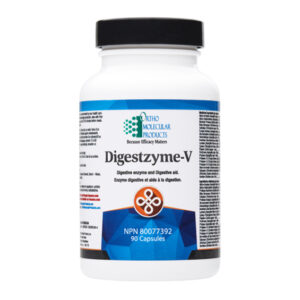
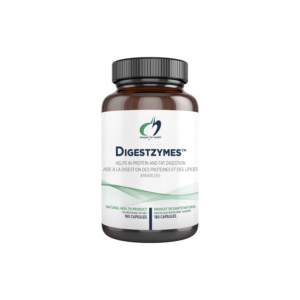
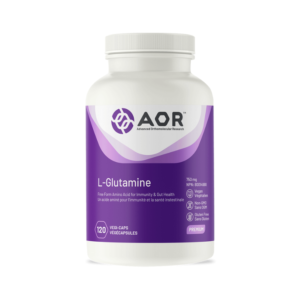
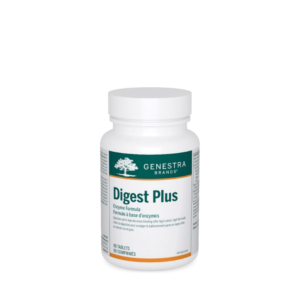
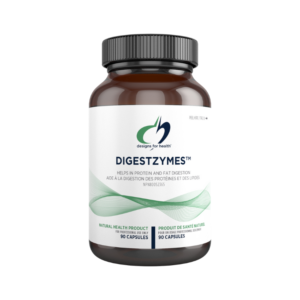
Reviews
There are no reviews yet.